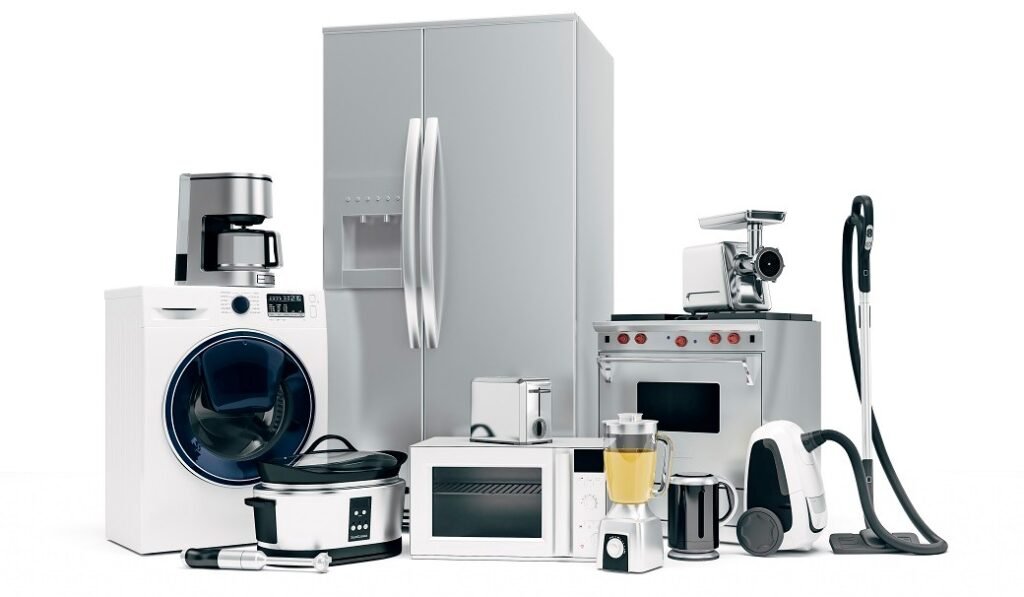On Aug. 23, 2024, China’s State Administration for Market Regulation issued a mandatory national standard titled “Household and Similar Electrical Appliances—Energy Saving and Environment Protection Specification” (GB 44499-2024), which will come into effect Sept. 1, 2026.
Changes from the February 2024 draft for WTO notification include a 12-months shorter transition period, a revised definition of “household and similar electrical appliances”, and a removed requirement for product components used for maintenance. A note added to the final version of the standard states that supporting consumables that are used up through consumption (e.g., cleaning agents) should not be factored into recyclability calculation.
According to the preface, the standard aims to achieve energy conservation and environmental protection in the home appliance industry through the minimization of resource and energy consumption, reduction and elimination of materials containing hazardous substances, and reduction of pollution generation and discharge in the product lifecycle.
Scope of the standard
The standard provides general rules for the energy conservation and environmental protection of “household and similar electrical appliances”, as well as requirements for energy conservation and environmental protection in the production, installation and recycling of these appliances in their product lifecycle.
“Household and similar electrical appliances” are defined as electrical appliances used in households, residences and similar places (e.g., stores, light industry factories and farms) by nonexperts that have a rated voltage of 250 V or less for appliances using single-phase AC power or 480 V or less for other appliances. In the draft, the definition specifically mentioned appliances powered by DC power and batteries as included in it, but the final version has removed this remark.
General rules
Requirements for packaging materials
Packaging materials have to fully protect the products, meet safety, hygiene and environmental requirements, and meet consumer needs as basic requirements. Packaging materials that simplify the packaging structure of electrical products, reduce packaging waste, and are recyclable and easily degradable should be used preferentially. This provision is unchanged from the WTO notification draft.
Requirements for materials and components used for maintenance
The WTO notification draft included the requirement that materials and components used by manufacturers for repair or maintenance of products must be consistent with the energy conservation and environmental protection requirements of the original designs of products. As this requirement has been removed from the final version, it is presumed that materials and components used for maintenance are not required to be consistent with original design requirements.
Chemical use restrictions
Restrictions in production processes
- Hydrochlorofluorocarbons, 1,1,1-trichloroethane (methyl chloroform, TCA), trifluorotrichloroethane (CFC-113) and carbon tetrachloride (CTC) must not be used as cleaning agents in the production of electrical appliances. VOC content and the concentrations of specified VOCs in cleaning agents must be measured using the method specified by the GB 38508 standard, and must meet the requirements of the GB 38508 standard. (The underline indicates an addition to the final version.)
- The following persistent organic pollutants must not be used in production processes: hexachlorobutadiene (HCBD), polychlorinated naphthalenes (PCNs), pentachlorophenol and its salts and esters (PCPs), decabromodiphenyl ether (decaBDE) and short-chain chlorinated paraffins (SCCPs). Unless otherwise stated, this provision does not apply to chemicals generated in products as unintentional trace contaminants. (The underline indicates an addition to the final version.)
Prohibition of certain materials in products
- Electrical appliances must not contain refrigerants or blowing agents containing chlorofluorocarbons (CFCs).
Calculation of product recyclability
Manufacturers must calculate the recyclability rate of products using the following equation provided in Appendix B of the standard:
Equation
Rcyc (%) = (total mass of components expected to be recycled (kg) / total mass of the product (kg)) × 100
where Rcyc is the recyclability rate of the product. “components expected to be recycled” in the equation are components involved in the use of the product itself; the packaging of the product and supporting consumables that are used up through consumption (e.g., cleaning agents) are not included in these components. (The underline indicates an addition to the final version.)
Instructions for calculation
- The mass of components that require special qualifications for their disposal, such as refrigerants containing HCFCs, and components that have low values for recycling purposes, such as thermoset plastics and plastic foams, should be excluded from the numerator of the equation.
- The mass of materials that are used in sterilization, cleansing and other auxiliary functions and whose components cannot be identified should be excluded from the numerator.
- For plastic components with a mass of more than 25 g or a surface area of more than 5 × 10 mm2, the mass of component materials that are not listed on the surface should be excluded from the numerator.
- Thermoplastic monomaterials, mixed plastics containing two or more compatible plastics, and copper clad laminate in printed circuit boards are included in the numerator.
Two-phase implementation of the standard
The final version of the standard includes a new provision stipulating that the standard will take effect 13 months after its effective date for products produced or imported before the effective date.
The national standard (in Chinese) is available at
https://openstd.samr.gov.cn/bzgk/gb/newGbInfo?hcno=59B8B663EB5FBFAAEEA45E402D910B87
 China issues national standard setting out recyclability rate calculation method, chemical use restrictions for appliances
China issues national standard setting out recyclability rate calculation method, chemical use restrictions for appliances 

























